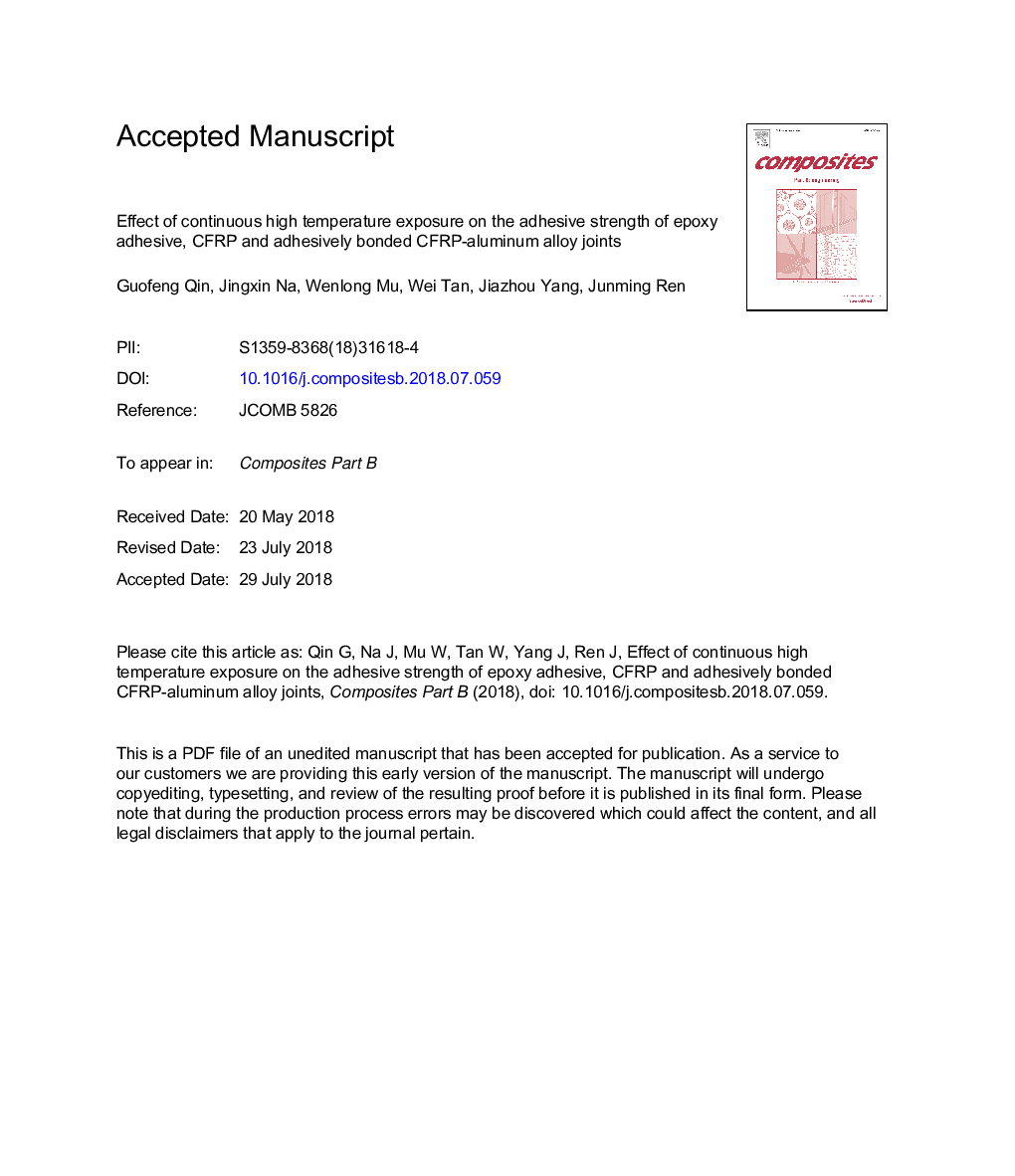| کد مقاله | کد نشریه | سال انتشار | مقاله انگلیسی | نسخه تمام متن |
|---|---|---|---|---|
| 7211728 | 1469331 | 2018 | 27 صفحه PDF | دانلود رایگان |
عنوان انگلیسی مقاله ISI
Effect of continuous high temperature exposure on the adhesive strength of epoxy adhesive, CFRP and adhesively bonded CFRP-aluminum alloy joints
دانلود مقاله + سفارش ترجمه
دانلود مقاله ISI انگلیسی
رایگان برای ایرانیان
کلمات کلیدی
موضوعات مرتبط
مهندسی و علوم پایه
سایر رشته های مهندسی
مهندسی (عمومی)
پیش نمایش صفحه اول مقاله

چکیده انگلیسی
To investigate the degradation mechanism of adhesively bonded CFRP (carbon fiber reinforced plastics)-aluminum alloy joints applied to high speed EMUs (electric multiple units) after experiencing continuous high temperature environment, bulk specimens, CFRP plates and adhesive joints, including thick-adherend shear joints (TSJs), scarf joints (SJs) with scarf angle 45° (SJ45°) and butt joints (BJs) were exposed at 80â¯Â°C for 30 days and then tested every 10 days. Chemical analysis, such as fourier transform infrared spectroscopy (FTIR), thermogravimetric Analysis (TGA) and differential scanning calorimeter (DSC) were conducted to analyze the variations of composition, glass transformation temperature (Tg) and thermal stability of the adhesive Araldite® 2015 and CFRP. Bulk specimens were also used to investigate the mechanical properties (failure strength, Young's modulus, strain) of the adhesive Araldite® 2015. The failure strength of CFRP after thermal exposure was tested with consideration of different surface treatments, and scanning electron microscopy (SEM) was also used to investigate the fracture surfaces of CFRP. The failure strength and failure surfaces of CFRP- aluminum alloy joints were analyzed to study the rules of degradation process. The results show that the post curing behavior of the adhesive Araldite® 2015 was verified by the composition analysis, leading to the obvious improvement of Tg, thermal stability, tensile strength and Young's modulus. However, CFRP degraded after thermal exposure, resulting in the slight decreases of Tg and thermal stability. The shear and normal strength of degraded CFRP dropped sharply because of the modification of epoxy matrix and decrease of interlaminar strength, although it regained to approximately 90% of unaged CFRP after the improvement of surface roughness. For adhesively bonded CFRP-aluminum alloy joints, with increasing proportion of normal stress and exposure time, the failure strength of adhesively declined faster because of the larger areas of fiber tear and interface failure, illustrating that the effect of CFRP degradation and interface failure were more obvious than that of post curing behavior of the adhesive Araldite® 2015. Therefore, CFRP degradation and interface failure were the main causes for the degradation of adhesively bonded CFRP-aluminum alloy joints subjected to thermal environment.
ناشر
Database: Elsevier - ScienceDirect (ساینس دایرکت)
Journal: Composites Part B: Engineering - Volume 154, 1 December 2018, Pages 43-55
Journal: Composites Part B: Engineering - Volume 154, 1 December 2018, Pages 43-55
نویسندگان
Guofeng Qin, Jingxin Na, Wenlong Mu, Wei Tan, Jiazhou Yang, Junming Ren,